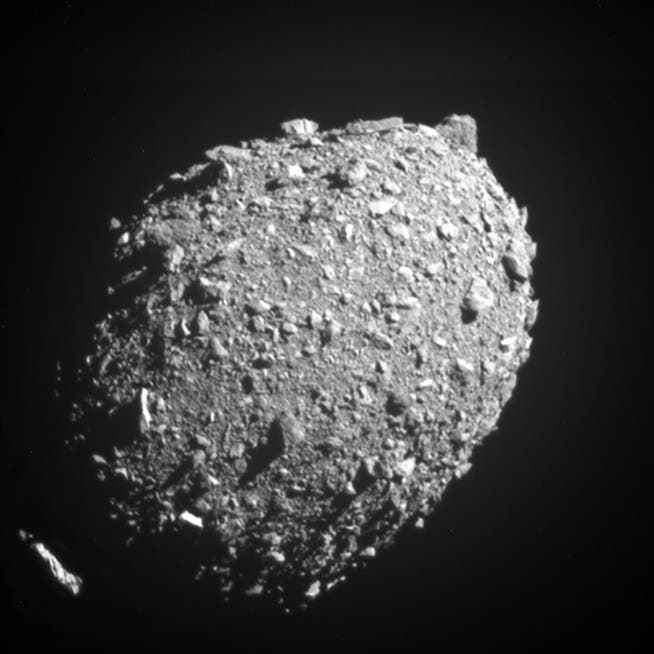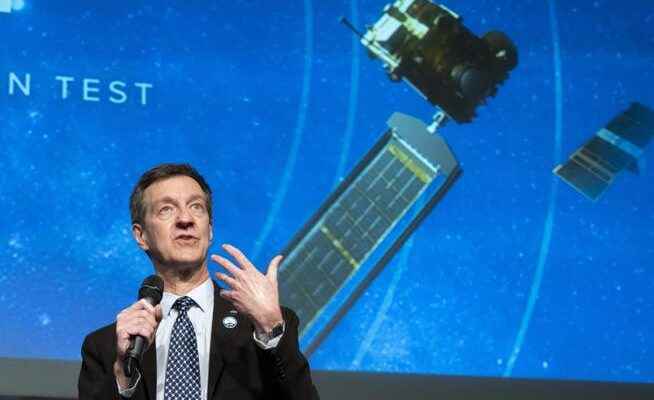A vending machine crashing into a football stadium: This is how you can imagine the NASA mission “Dart”, which was intended to change the movement of an asteroid for the first time. Now there are first findings.
Dart Program Scientist Tom Statler at the media briefing on NASA’s recently completed Double Asteroid Redirection Test (Dart) on Tuesday, October 11.
(dpa) According to its own statements, the American space agency Nasa has successfully changed the direction of movement of an asteroid for the first time by colliding with a probe. About two weeks after the impact, analyzes showed that the orbit of the celestial body around another asteroid was different, NASA announced on Tuesday. The time for an orbit before the impact of the “Dart” probe was 11:55 hours – now, on the other hand, a time of 11:23 hours was measured. A change of 73 seconds had previously been set as the minimum target.
Prepare for other dangers
At a speed of around 6.6 kilometers per second, the cube-shaped “Dart” probe, the size of a vending machine, crashed into the asteroid Dimorphos, which is about the size of a football stadium, at the end of September. From the approximately $ 330 million asteroid defense mission, NASA hopes to find out how the earth could be protected from approaching celestial bodies. However, Dimorphos posed no threat to humanity.

An image provided by NASA shows the asteroid moon Dimorphos seconds before the probe’s impact.
“This mission shows that NASA is trying to be prepared for whatever the universe throws at us. NASA has shown that we take defending the planet seriously,” said Space Agency chief Bill Nelson. He called the mission’s success a “watershed moment” in protecting humanity from an asteroid impact. In the coming weeks and months, the impact of the collision will now be further investigated. In 2024, the similar “Hera” mission of the European Space Agency Esa is to start for even more detailed research.
Asteroids with a diameter of more than 140 meters
NASA and researchers around the world have been dealing with the question of how to defend against an asteroid for many years. An asteroid impact around 66 million years ago, for example, is considered by scientists to be the leading theory as to why the dinosaurs became extinct. Scientists don’t currently know of any asteroid that could be heading straight for Earth any time soon – but researchers have identified around 27,000 asteroids near our planet, around 10,000 of them with a diameter of more than 140 meters.
